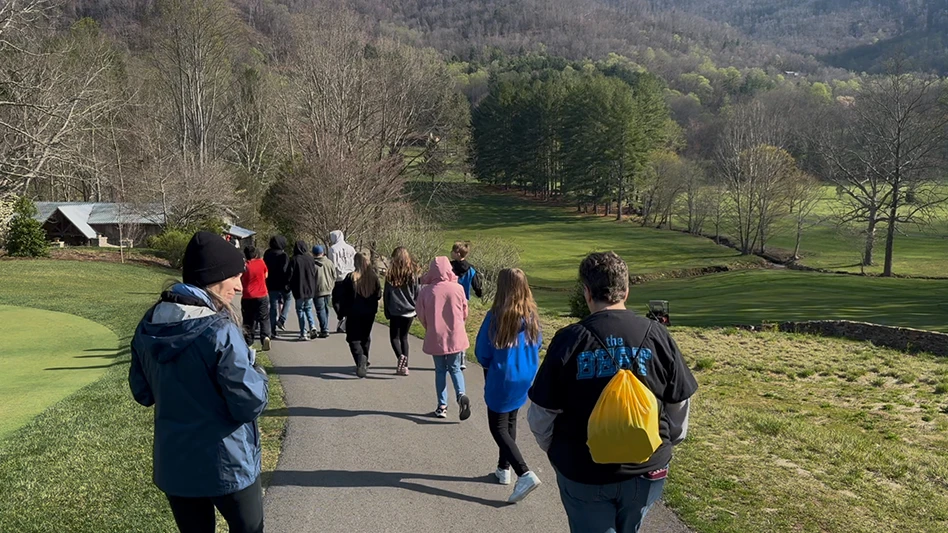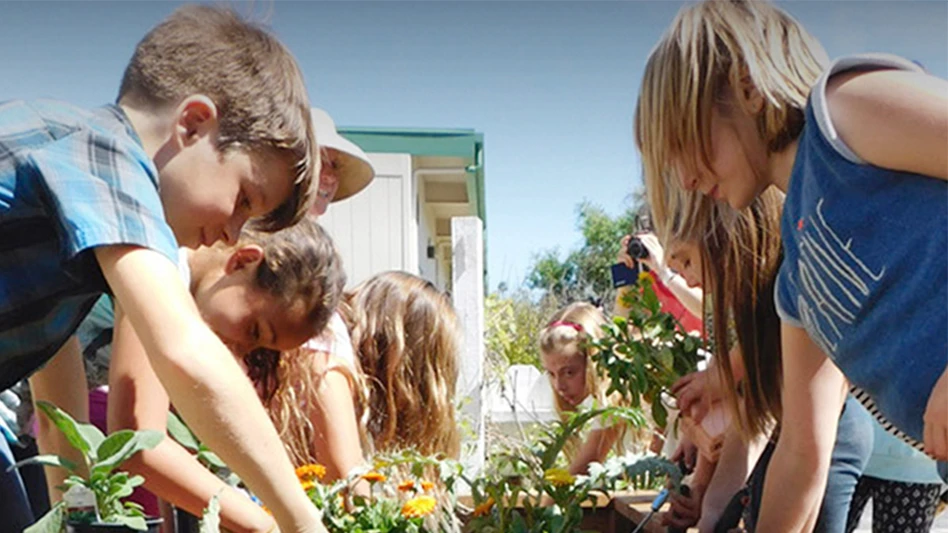
For any course owner, operator or manager, the prospect of a restoration project can be exciting, if not a bit daunting.
Looking at nine course restorations? That’s gonna take some serious vision and organization — not to mention a good spreadsheet.
From its mountain surrounds in the Southern California desert, PGA WEST in La Quinta, California, known as the The Western Home of Golf in America, has been one of the nation’s more recognized, bustling and, yes, complex complexes since its stated debut with Pete Dye’s Stadium Course in the mid-1980s.
Sporting a unique, if not singular scorecard of architects — Dye, Jack Nicklaus, Greg Norman, Arnold Palmer and Tom Weiskopf — across a nine-course umbrella portfolio that includes the two Dye-drawn tracks at nearby La Quinta Resort & Club, the volume of play includes resort guests, homeowners, members, daily-fee golfers and the annual January visit from the PGA Tour’s American Express.
Got that spreadsheet prepped?
Starting in the pandemic summer of 2020, under the new ownership of Century Golf Partners, PGA WEST endeavored a massive restoration purview that aims to eventually touch all 162 of its holes across its five public and four private courses.
A study in course
The work began at the Nicklaus Tournament Course, one of three tracks (along with the Stadium and nearby/historic La Quinta Country Club) to serve in the AMEX rota.
“When COVID hit, we took a chance that summer, because we knew we needed to redo the greens, which had shrunk over the years,” PGA WEST executive director Ben Dobbs says. We got rid of the old Bermudagrass, put new TifEagle down and expanded the greens back to their original shapes and sizes.”
Positive reactions from Tour players, club members and daily hackers alike set the stage for further projects.
“And then, last summer (in ’21), we did two more courses: the Palmer Private and the Greg Norman,” Dobbs continues.
At the Palmer Private, a reshaping of greenside bunkers, addition of new greenside bunkering and fresh sand across all traps made for a full slate.
“For the Palmer, we brought in Brandon Johnson, (senior architect) for Palmer Design, who expanded the greens back to original size and design intent,” Dobbs says. “We also changed up the back nine along the Santa Rosa Mountains a bit. Specifically, Nos. 14 and 16 featured basically the same shot over the canal with the mountains behind. So we made them a bit different, adding some bunkering and highlighting the rocks.”
Concurrently, PGA WEST was restoring its most modern course, the Greg Norman, which debuted in 1999. Known for a unique scarcity of turf outlined by decomposed granite and desert-scape, the standalone track received a singular treatment, including removal of outlining landscape that proved a scoring hindrance for many.
“At the same time last summer, we redid the Norman, putting in TifEagle greens,” Dobbs says. “And the Norman is unique; it was designed as a desert course, but cart travel often involved driving across desert, and neither ownership nor members really cared for that, so we expanded the turf and gave members and guests areas where they can now drive the cart directly from path to grass.”
Stadium scene
Entering the summer of 2022, PGA WEST began a two-phase restoration on its most famed course, The Stadium, recognized as a seminal chapter in the Pete Dye portfolio since its debut at the AMEX in 1987, when that event was still called the Bob Hope Classic.
Overseeing the project is Indiana-based architect Tim Liddy, who worked with Dye for more than 28 years, starting with Kiawah Island in 1992.
“Stadium is now 36 years old, so it’s not uncommon to upgrade to today’s standards,” Liddy says. “We’re looking at the infrastructure, from drainage to sand to irrigation, items that have a typical lifespan. We don’t plan on changing the design. And, of course, it’s also common for greens to shrink over time, because the mower doesn’t want to scalp the surface. So, we’ll regrass the greens (to TifEagle) and get them back to their original sizes and original contouring, which may have been lost over the years.”
Sharpening bunker edges, reshaping of some bunkers and a total replacement of original irrigation will be part of the plan across two summers.
“Landscape in the desert can be complicated, so we’ll also look at some improvements in that area,” Liddy continues. “Plantings in the desert can overgrow after a while, and then other things may have passed away. There are some newer varieties of plant material that we’ll look at, to soften some of the edges between the architecture of the homes and the course.”
Closing nine holes at a time for consecutive summers, the Stadium work will further involve reestablishing solid turf in rough areas and tree removal.
“Over time, trees have been planted on the course, which take away from Mr. Dye’s original shaping and mounding. Much of the mounding follows the mountain terrain, mimicking the mountains,” Dobbs says. “Sticking a tree in the middle of that takes away from the original intention, so we’re removing those to really open up the true beauty of the course.”
With a studied palate, Liddy intends to carefully paint the changes.
“I think Stadium is one of Pete’s truly iconic courses. Actually, I know it is,” Liddy says. “With Stadium, it was a direction that he started to develop, and shows a style for many courses which were to come. He used contrast very, very well at Stadium. And by that, I mean, where he wanted you to hit the ball — from fairway to green — those locations have the sharpest angles or the deepest shadows. It takes your eye to that target. It’s very conscious broad-brush work from Pete.”
The designer is also well aware of the course’s penchant for bold aesthetic, both nuanced and dramatic.
“What also makes it so good is that, because of being in the desert, Pete could go vertical, more so than he typically could,” Liddy says. “Take, say, TPC Sawgrass in Florida. Those vertical elevation changes are maybe three or four feet at the most. At Stadium, the shaping is eight feet, up and down, and then the mounding, of course, is upwards of 20 and 30 feet. The shaping, the shadowing, the dimensions make for, artistically, one of Pete’s best.”
The restoration project is also one of a personal nature, going deeper than blueprints.

“It’s a great opportunity,” Liddy says. “And the fact that they’ve put their trust in me, … I’m just very, very excited to be working on this and future projects. When I’m out there, it brings back memories of Pete. Walking down the PGA WEST fairways, I can hear him talking to me.”
Excelling at excel
With three restorations completed and a fourth underway, Dobbs will soon turn his attentions to subsequent work on Dye’s Mountain and Dunes courses, and then the Jack Nicklaus Private. Eventually, projects will begin on the Weiskopf Private and Pete Dye Private Citrus courses, respectively.
The broad task is not one for the timid, especially with all work slated for the triple-digit off-seasons of Coachella Valley summers.
“I need to really think about everything we’ve got here: Private members, resort play, tournaments, a PGA Tour event — when you take a golf course down, it takes a lot of planning to consider all the ways that will impact the rest of the property,” Dobbs says. “If I take a resort course down, it’s, ‘Will my resort guests still have enough places to play?’ and if it’s a private course, ‘Will my members still enough places to play?’”
Amid a time of national worker and product concerns, a Socratic method of leadership proves helpful. Asks Dobbs: “Especially right now, I need to ask, ‘Can we get construction crews to do the job?’ and “Can we get the products? Are they available right now?’ Some of these are in my control, but some of them aren’t.”
And for a property of stature, it’s not just getting the services of anybody — it’s hiring somebody.
“Once we determine the scope of a project, Chris May, our director of agronomy, starts the process of reaching out to different companies to see who’s available and to give us quotes,” Dobbs says. “Sometimes, we’ll even get so granular as we want to know exactly who is on these teams. The golf industry can be small, and we may know that we prefer one shaper over another.”
Reliance on a ‘pod system’ of superintendents across the course count has proved a best PGA WEST practice.
“We have what we call ‘pod leaders,’ and three head superintendents, each of whom oversees three courses, and then each has one or two superintendents under them,” Dobbs explains. “It’s a great way to communicate, and we really share a lot of crews and equipment, so if there’s an issue on a course, say a mainline breaks, we can have all of our resources go over and fix that. We say that everybody is responsible for everything, so that there’s no, ‘Our course is better than your course.’”
The appreciation of balancing projects has provided a lesson learned.
“Last summer, we did two of the courses at the same time, which was an aggressive move,” Dobbs says. “What that resulted in was pushing back the overseed windows to November and December, and, therefore, we didn’t have as good of winter conditions as we could have. Going forward, we’ll focus energy on one course at a time.”
Dobbs’ own energies are tangible via the master plan, which he tracks and organizes using a master Excel calendar. He uses the same calendar to track equipment. From calendar to courses, organization equals aspiration.
“It’s a great challenge to ensure I’m on my game, have everybody in place and everything organized,” Dobbs says. “Our goal is to be a top-five resort in country, so we want to elevate PGA WEST to that premier experience.”
Judd Spicer is a Palm Desert, California-based writer and a senior Golf Course Industry contributor.

Explore the October 2022 Issue
Check out more from this issue and find your next story to read.
Latest from Golf Course Industry
- The Aquatrols Company hires marketing manager
- Renovating Bredemus in West Texas
- Renovation starts at Okatie Creek GC at Sun City Hilton Head
- The Fittest Podcast in Turf: Episode 1
- New 6-hole course debuts in Oklahoma
- GCSAA announces Grassroots Ambassador Leadership Award recipients
- Reel Turf Techs: David Gummo
- PBI-Gordon promotes two to executive level





